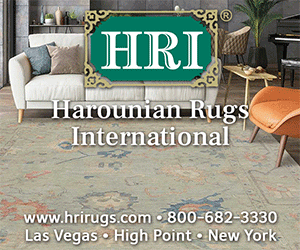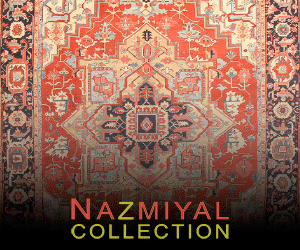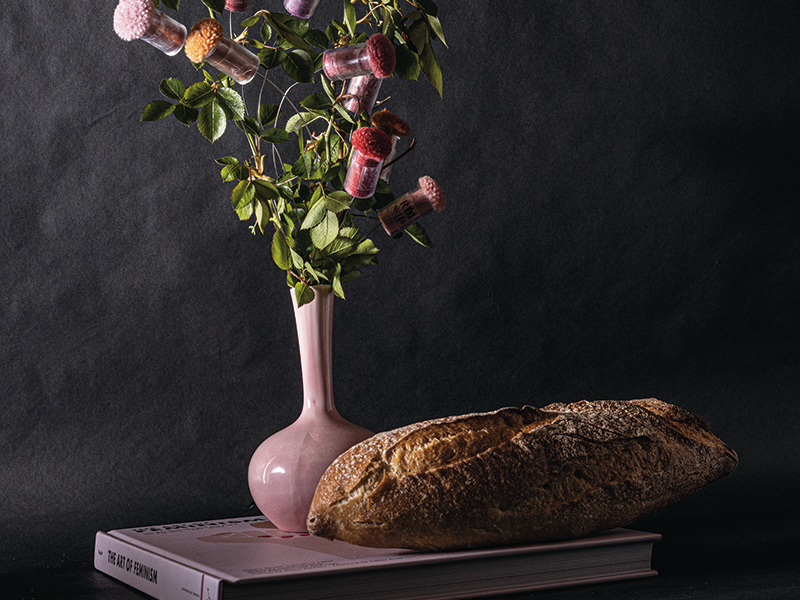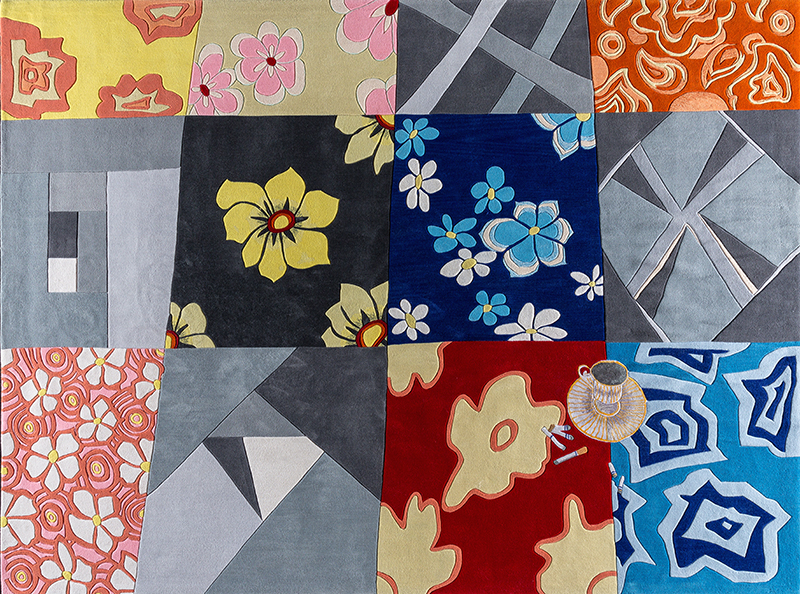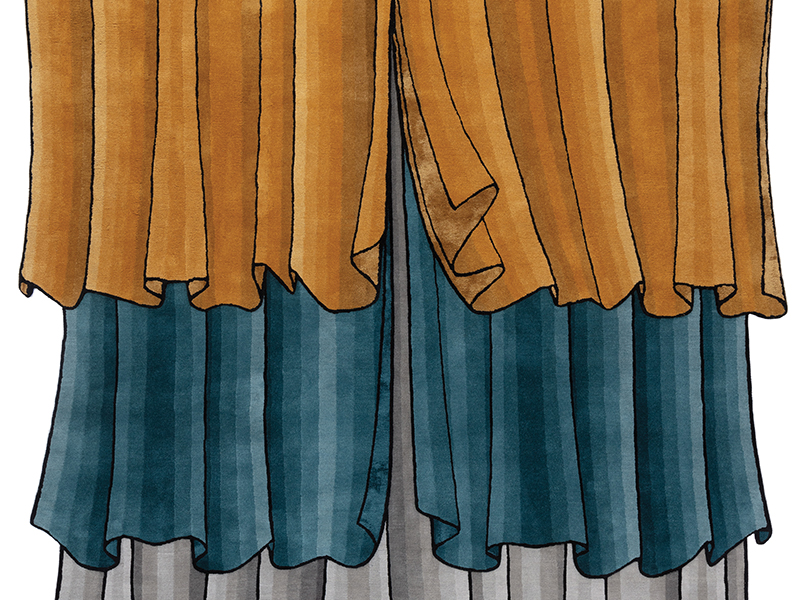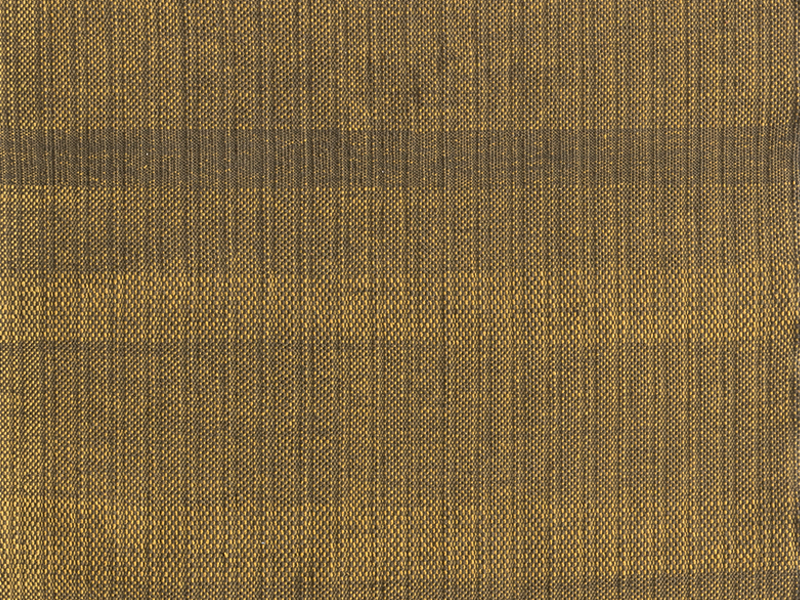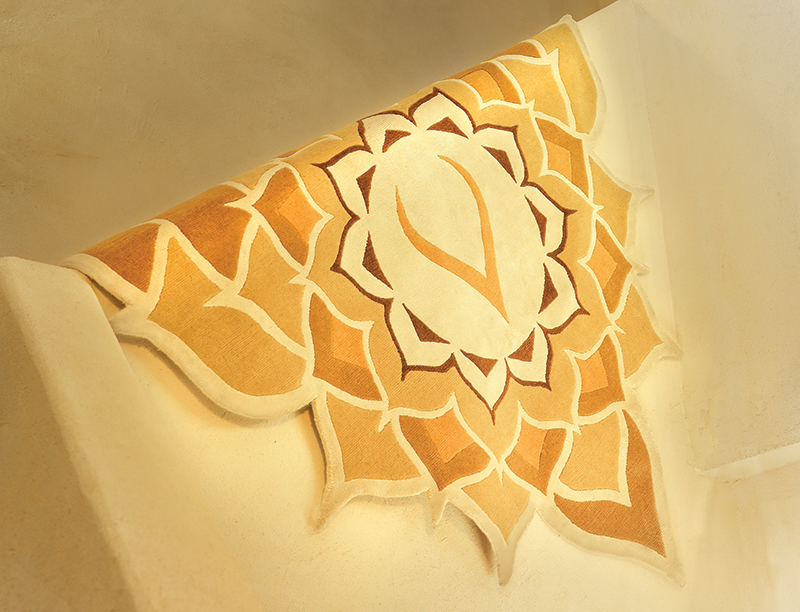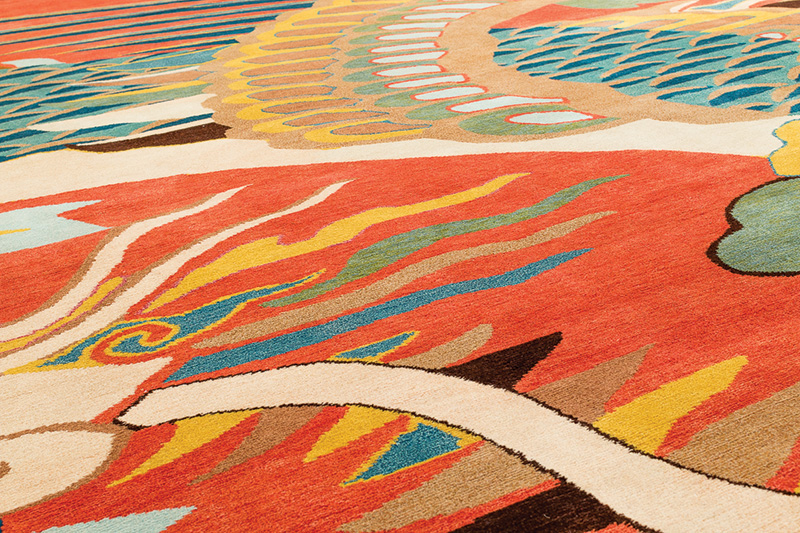Bread & Roses
It began as a novelty to encourage creativity during a spring interrupted by a pandemic. Created by RUG INSIDER Editor Michael Christie, the concept of #tableauxdepompoms is simple: recreate a commonplace scene from around the home or (home) office using color-matching poms—preferably with a timely, perhaps socio-economic message attached. That was the concept. For brilliant execution however, one need look no further than the “Bread and Roses” tableaux created by Catherine Bertulli in collaboration with photographer Dennis Geller.
